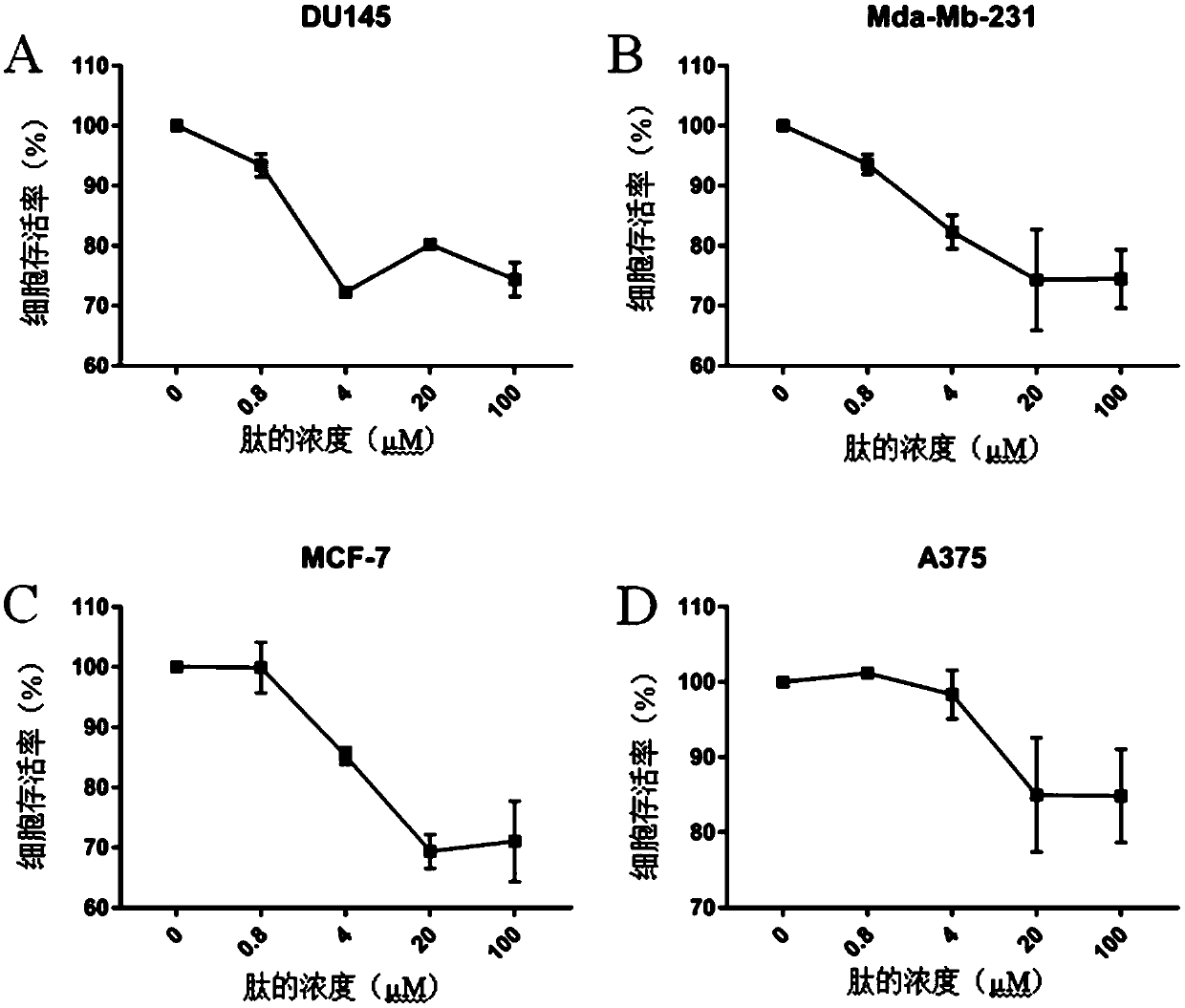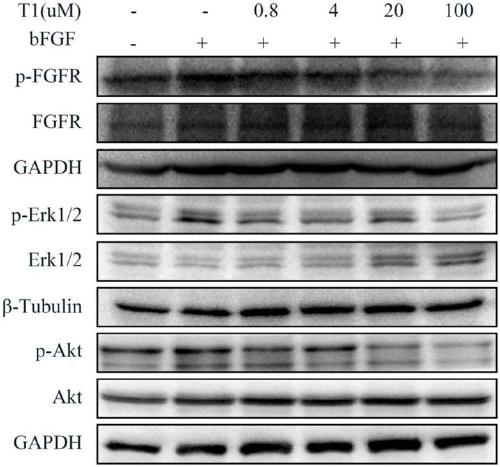Anti-tumor small molecule peptide targeting FGFRs and application of anti-tumor small molecule peptide
A small-molecule peptide and anti-tumor technology, applied in the fields of biotechnology and medicine, can solve problems such as immunogenicity, multiple targets, and high toxicity
- Summary
- Abstract
- Description
- Claims
- Application Information
AI Technical Summary
Problems solved by technology
Method used
Image
Examples
Embodiment 1
[0028] Example 1 Screening of Small Molecular Peptides and Detection of Antitumor Effects
[0029] (1) Screening of small molecule peptides
[0030] The present invention is based on the phage display technology, relying on the non-covalent combination of a certain sequence of polypeptides and FGFR2, and incubating the recombinant protein of the extracellular segment of FGFR2 on a polystyrene plate (purchased from Yiqiao Shenzhou Science and Technology Co., Ltd., Beijing, article number 16483- H08H) PBS buffer solution, the protein is combined with the plate, and then the plate is processed through 5% (w / v) BSA (bovine serum albumin) blocking and washing with TBST buffer solution to contain 2.7*10 9 A phage expressing different short peptide sequences (purchased from New England Biolab, Beijing, trade name Ph.D.-12phage display peptide library kit) was co-incubated with the plate, unbound phage was eluted, and the phage that could bind was released in the large intestine of ER...
Embodiment 2
[0033] Example 2 Cellular level functional test of T1 polypeptide
[0034] ① Select the test cell line
[0035] Since FGFR2 has a certain expression level in SGC-7901 cells, various literatures have studied the biological functions of FGFR in SGC-7901 cells, especially the targeted inhibitors of the FGFR family. Whether the synthesized polypeptide has inhibitory effect on the proliferation of tumor cells was screened by Cell Counting Kit-8 from Shanghai Cell Bank.
[0036] ②Test method
[0037] A, SGC-7901 cells were cultured in DMEM medium supplemented with 10% (v / v) fetal bovine serum to the logarithmic phase, digested and collected cells, spread evenly in 96-well plate, cell density was 2000 / well, adherent After 24 hours, starve for 12 hours with serum-free DMEM medium, then replace the medium with DMEM medium supplemented with 5% (v / v) fetal bovine serum and add T1 polypeptide for 48 hours, and set 6 replicate wells for each concentration gradient ; Wherein, the final c...
Embodiment 3
[0041] Example 3: Detection of broad-spectrum anti-tumor properties of polypeptide T1
[0042] (1) Select the test cell line
[0043] Alternative cell lines are DU145 (human prostate cancer cells), Mda-Mb-231 (human gastric adenocarcinoma cells), EC9706 (human esophageal squamous cell carcinoma cells), A375 (human melanoma cells), the above four cell lines were purchased from Shanghai cell bank.
[0044] (2) Test method
[0045] The test method is the same as in Example 2, and the cell lines are DU145, Mda-Mb-231, EC9706, and A375.
[0046] (3) Test results
[0047] The result is as figure 2 As shown: T1 polypeptide has a certain level of inhibition on the proliferation of the above four cell lines, and all of them are concentration-gradient dependent. The maximum inhibitory efficiency can be obtained with a basic administration concentration of no more than 20 μM. This test shows that T1 polypeptide has a more obvious inhibitory rate on the four cell lines DU145, MM231, a...
PUM
 Login to View More
Login to View More Abstract
Description
Claims
Application Information
 Login to View More
Login to View More - R&D
- Intellectual Property
- Life Sciences
- Materials
- Tech Scout
- Unparalleled Data Quality
- Higher Quality Content
- 60% Fewer Hallucinations
Browse by: Latest US Patents, China's latest patents, Technical Efficacy Thesaurus, Application Domain, Technology Topic, Popular Technical Reports.
© 2025 PatSnap. All rights reserved.Legal|Privacy policy|Modern Slavery Act Transparency Statement|Sitemap|About US| Contact US: help@patsnap.com



